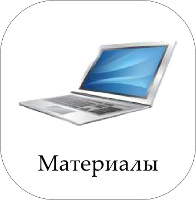
В данном разделе вы можете ознакомиться с билетами по различным предметам, школьными и экзаменационными топиками по английскому и немецкому языку, конспектами, а также материалами по педагогической практике.
|
Moscow is known all over the world because it is the capital of the largest and one of the most powerful states on the Earth. It is the political, economic, scientific and cultural heart of Russia. More than 8,000.000 people live in Moscow.
The President and the Federation Assembly of Russia are located in Moscow as well as other important political organisations, headquarters of political parties, embassies and consulates of all countries, all ministries and services. The Kremlin oа Moscow is the symbol of the Russian politics because all main official organisations arc situated here. The Mausoleum, the Grand Kremlin Palace (where official receptions and inaugurations of presidents take place), the State Kremlin Palace (where concerts are held) and the President's residence are on the territory of the Kremlin. The towers of the Kremlin are the symbol of Russia, especially the Spasskaya Tower. The building of the Assembly of Federation is also situated in Moscow.
Moscow was founded centuries ago. The first settlements appeared earlier, but it was for the first time mentioned in the chronicles in 1147. This year is now accepted by the historians as the beginning of the city's history. In 1156 the fortress was reinforced by Prince Yuri Dolgoruky. By and by the settlement became bigger and more powerful. In the 13 century Moscow became the capital of the Moscow principality as the centre of the straggle of the Russian lands against the Tartar yoke. In the 15 century Moscow became one of the most important cities of the united Russian State. During 1712-1917 St-Petersburg was the capital, but Moscow remained the second capital. In 1812 during the war against Napoleon Moscow was captured and burnt by the enemy. Napoleon wanted to destroy Moscow in order to break the resistance. But he did not succeed. After the October Revolution Moscow became the capital again. The battle of Moscow was one of the most important fights of World War II. The attacks of the Nazi troops were stopped under Moscow.
Moscow is now one of the most important centres of culture and science. There are more than 70 educational and research institutes and universities in Moscow, including the greatest Moscow State University named after M.V. Lomonosov. It was founded in 1755 on the initiative of Lomonosov and included departments of Philosophy, Law and Medicine. Now it includes more than 15 departments. Several greatest Russian libraries, including the State Library named after V.I. Lenin (founded in 1862, more than 35,000,000 items in some 250 languages), the Library of Natural Sciences (founded in 1934, more than 13,500,000 items), the Library of Foreign Literature are in Moscow.
There are more than 80 museums in Moscow. The most famous of them are the following.
Oruzheynaya Palata is one of the oldest and richest museums. It was started in the 14 century as the collection of royal carriages, plates and dishes, arms and armour, ceremonial dresses of tsars and tsarinas and state symbols such as thrones, the hat of Monomach, the crowns, the orb and the sceptre.
The so called Diamond Fund, the exhibition of unique precious stones, is also a wonderful museum. Here tourists can see precious stones and jewellery items of historical, artistic and financial value.
The Tsar Bell and the Tsar Cannon are examples of skills of Russian craftsmen. Tsar Bell was cast in 1733-1735 and weighed more than 200 tons. But during the Fire of 1737 a piece of 11,5 tons was cut off. The Tsar Cannon was cast in the 16th century to defend the Kremlin, but has never been used since then.
The State Tretyakov Gallery is the greatest museum of Russian art, one of the world's leading museums. It was founded in 1856 by P.M. Tretyakov as a private collection but in 1892 was granted to the State. After 1917 numer¬ous private collections were added to create this wonderful museum. The main departments are the Russian icon-painting, fine arts of the 18-19 centuries, sculpture, drawings, Soviet art.
The Museum of Fine Arts named after Pushkin is the second (after the Hermitage in St-Petersburg) in Russia by its collection of antiques of Egypt, ancient world, Oriental art and Western Europe.
The Historical Museum is the main museum of the State history. Moscow was being decorated by all tsars and rulers with beautiful buildings, churches, palaces and monuments. Moscow is sometimes called gold-domed because of the numerous churches and cathedrals each of which has gilded domes. The most famous churches are the Cathedral of Basil the Blessed, the Cathedrals of Assumption and of Archangels in the Kremlin and the newly-restored Temple of Christ the Saviour. 1997 was the year of 850 year anniversary of Moscow. The city was well prepared for the holiday. The centre was totally rebuilt.
Moscow is also a city of theatres. There are more than 30 theatres, popular with both Muscovites and tourists. The most famous theatre is the State Academic Bolshoi Theatre, founded in 1776. It was and is famous for its vocal and ballet schools. Other famous theatres are Moscow Art Theatre, the Maly Theatre, the Sovremennik, the Taganka, the Music Theatre and the Theatre of Satire.
Moscow TV and radio programmes are broadcast all over Russia and in many countries of the world.
The traffic in Moscow is very heavy. The Moscow Underground is the oldest in Russia (the construction began in 1935) and has 9 lines. One of them is circular and goes around the centre of the city. There are also buses, trams, trolley-buses and taxis of all kinds which offer their service to the Muscovites and the guests of the capital. Moscow receives about a million guests from all over the world every day. Moscow is also a port of 5 seas. There are 9 large and many smaller railway stations in Moscow.
|
|